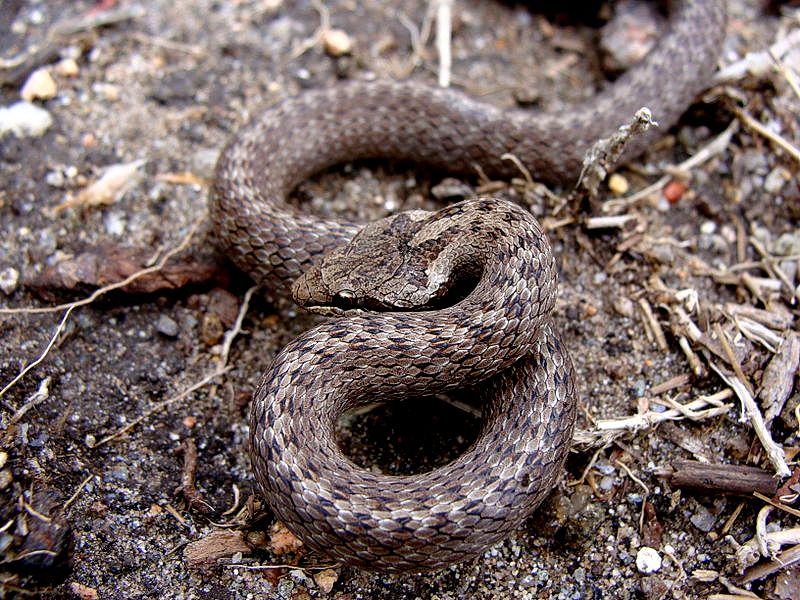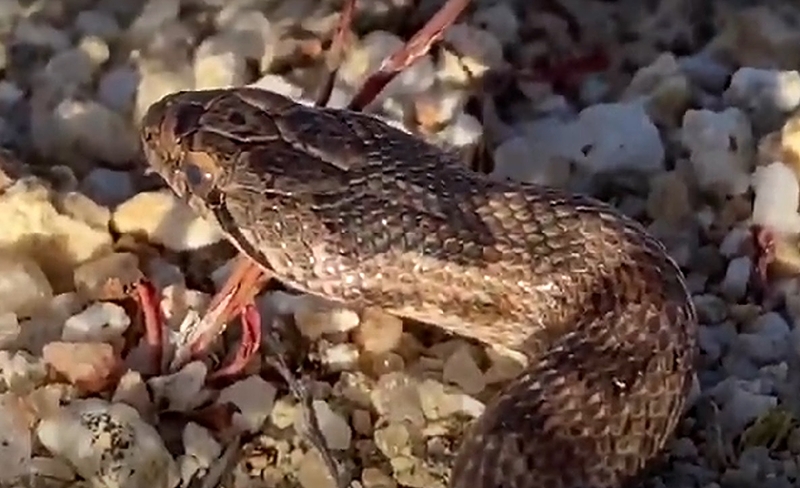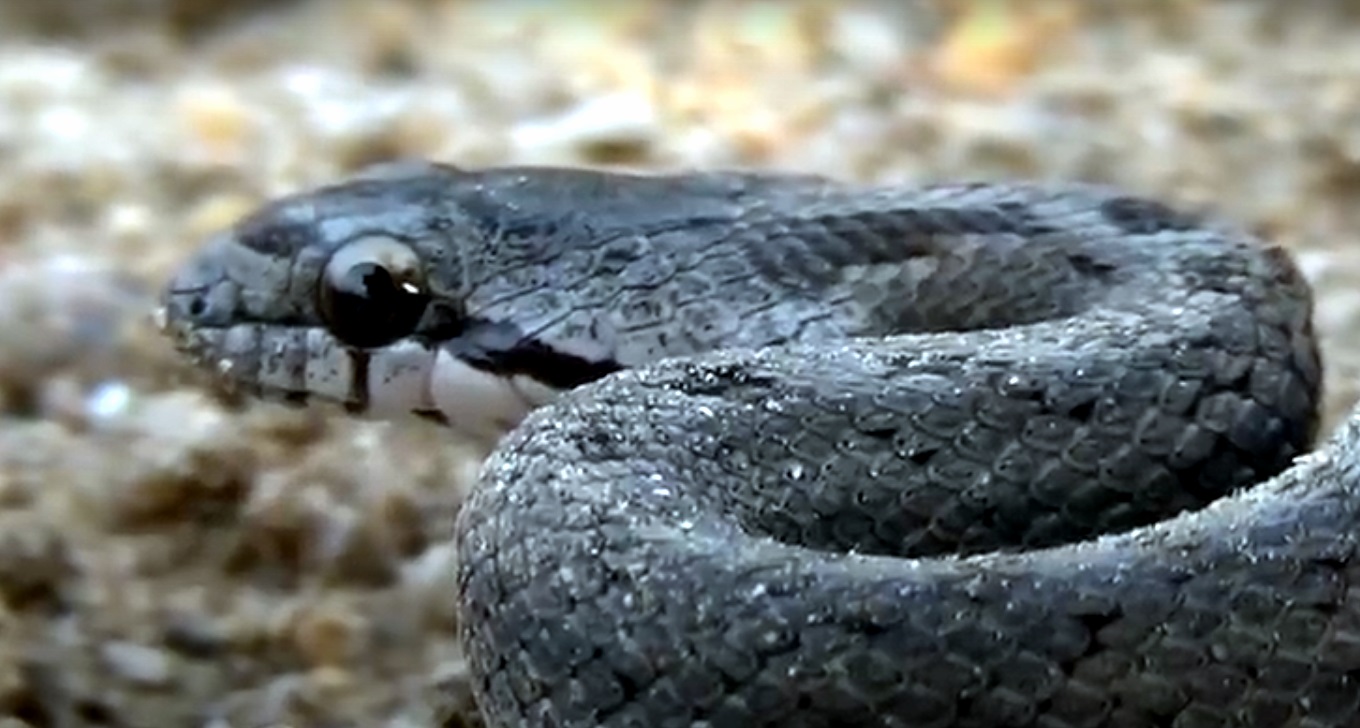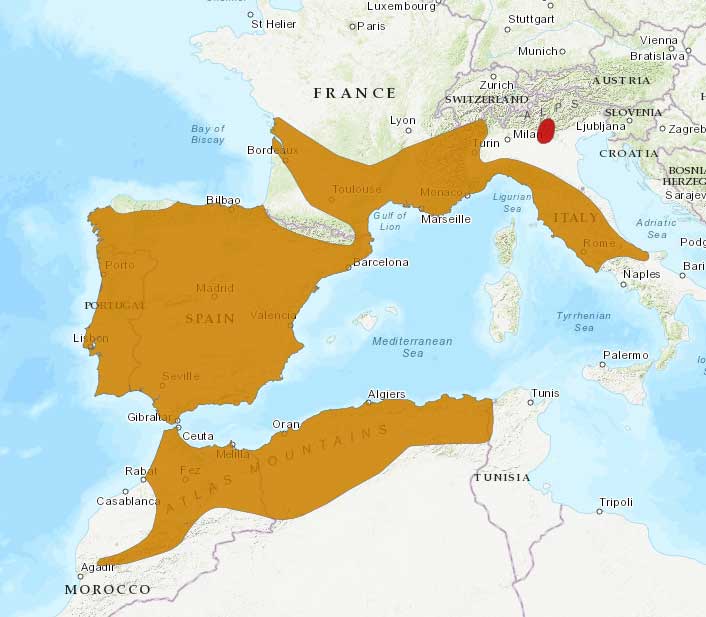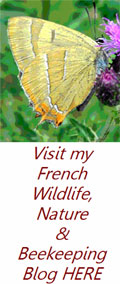Southern smooth snake
Coronella girondica
Coronelle de Bordeaux
(Syn:Française - Couleuvre bordelaise and Coronelle girondine)
The Southern smooth snake is very similar to the Smooth snake
Coronella austriaca.
They are a small, round bodied snake 50cm to 80cm in length, with a head that is somewhat flat with a pointed nose. At the rear of the head are two dark bands in the form of a U or V the open end of the V facing towards the tail although this feature isn't always clear and can be joined up. There is a black band which runs across the front of the head passing backwards through each eye. The back of the body varies somewhat in colour, greys and russets, with irregular transverse darker bands or blotches; the underside is lighter with small dark spots.
Found in the west, south-west and south of France they tend to live at lower altitudes seeking dry, sunny open spaces where the vegetation is sparse; rocky hillsides, old quarries, stone walls, along the edges of open woodland, hedgerows and coastal dunes. Lizards are the main source of prey, rarely small mammals; on occasion geckos and young snakes. The young eat insects.
Their main period of activity and prey seeking is during the night
generally spending the day inactive and under cover. They are not very agile and tend to move rather slowly, rarely being aggressive, although they can sometimes bite if handled and will also emit a foul scent from their anal glands. They don't not like cold or wet and have a long hibernation period from September until April under a manure / compost heap or a rotting tree stump.
Coupling takes place in May and up to 16 eggs that are usually stuck together are produced in July, the young tend to be active during the day and only measure 10cm.
